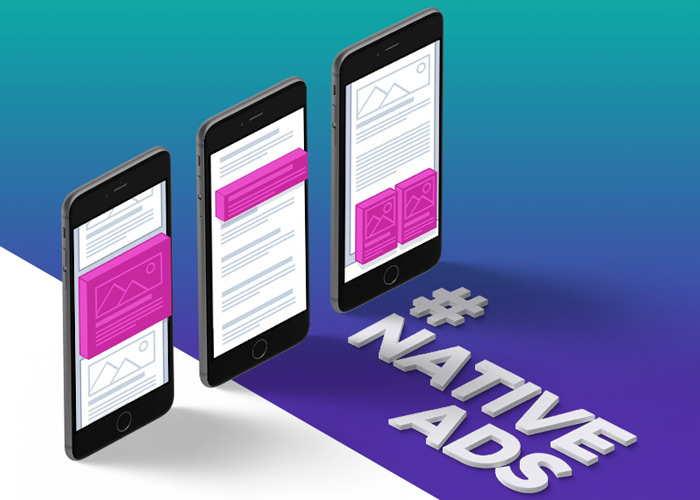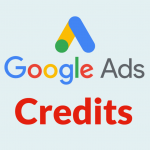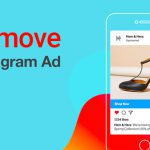Digital marketing is a great tool to attract an audience. But the more active people are on social media, the easier it is for them to recognize ads and stay away from advertising content. This is where Native Ads come in handy for businesses to get their message across in a different way.
Native Ads
So first we need to know what Native Ads is, why it is important and how we should use it to achieve optimal results.
“Native Ads is a type of digital advertising. And for the price you pay, it is tailored to the shape and function of the site or app where the brand audience is present, ” describes Dan Greenburg, CEO and founder of Sharethrough .
Native Ads are everywhere. From your favorite site that you visit every day to your favorite social network. Due to the fact that Native ads are well compatible with the user experience, they have more textual content than other ad formats (such as banner ads).
Also, instead of appearing around the page, they are placed at the top or bottom of the main content. In fact, in a way that gains the user’s trust.
For example, you enter a site and you are offered a story and when you click on it, you are redirected to that website. This is an example of Native advertising.
About two-thirds of the cost of banner advertising goes to Native ads. It is expected that in 2021 in the United States $ 41.14 million will be spent on Native advertising.
Also Read:
Buy The Best Sponsored Post to Boost your link Building and Branding
6 Types of Native Ads
Like other advertising models, native ads are displayed in different modes, each with its own advantages:
Native ads: In-Feed Units
If you come across sponsored content while reading an article on your favorite site or while browsing social media, you should know that these are Native Ads. These ads are displayed directly in the main text or image content of the site or social media.
Native ads are displayed differently on each site. Because they are designed to be exactly compatible with the text and image content of a specific site.
In-feed ad units promote sponsored content within a publication’s natural environment. The content is marked as sponsored and shows up on the website in a similar format as all other content from the publication. They are written either by the publisher or in conjunction with the sponsoring advertiser.
Native Advertising: Paid Search Units
Native advertising is one of the most popular advertising formats in search engines. As you can see in the picture, these are Native Ads that are displayed exactly as Organic Search Results.

Recommendation Widgets
They are displayed as suggested widgets on sites, social networks or search engine results.
On most websites at the end of every article if you encounter a widget with a heading like ‘Recommended for you’ or ‘You may also like’, you’re looking at a content recommendation widget.
These sponsored recommendations are paid content discovery links distributed by content amplification networks. Such networks amplify your brand’s content by having it recommended on sites with a like-minded or similar audience.
Also Read:
The Benefits of Blogging for Social Marketing and Personal Branding
Promoted Listings
If you are in the habit of shopping online, you must have seen the same ads on online shopping websites.
For example, when you plan to buy a book from Amazon, you will be presented a list that gives you the same number of ads as well.
In fact, a number of publishers will show you their ads in exactly the form of organic content that you have been searching for.
These don’t have editorial content, but they are designed to fit seamlessly with the browsing experience.
They are typically used by e-commerce sites to feature sponsored products and look identical to the products already listed on a given site.
Display Ads With Native Elements
These advertising format are in the form of banner ads that you constantly see on various sites. But what makes them different is that the content of these ads is the same as the site you are on and the content you are reading.
Campbell, for example, ran this model of native advertising on allrecipes.com. As you can see, the form of this ad is not similar to the general form of the site, but its content is completely related to the content of the site.
This looks like any other ad, but it has great contextual relevancy with the publisher.
For example, a cereal brand might promote its products on websites that publish user-generated content such as Martha Stewart Living.
Also Read:
Social Media Conversion Rate : How to Boost it the Best way ?
Custom Ads
‘Custom ads’ is a term coined by the Interactive Advertising Bureau, as the catchall for contextual ads that don’t necessarily fit in a specific format.
Due to the rapid advancement of technology, native advertising is also going to make it easier and better for brands to do this model of advertising.
For example, we can mention this new filter in Snapchat. This filter is exactly among the other SnapChat filters, but it’s a kind of native ad that you can buy if needed.
Also Read:
Content Marketing and PPC Advertising to Increase Website Traffic










